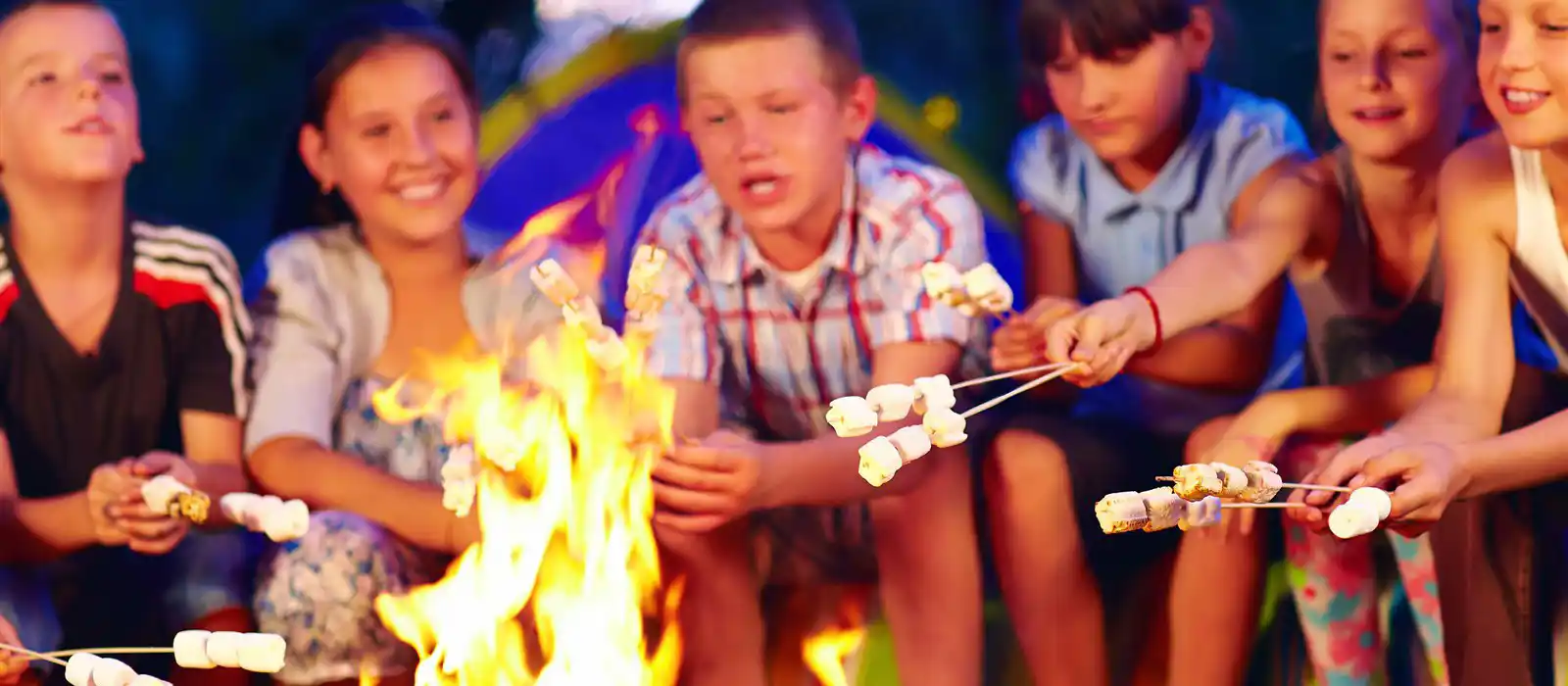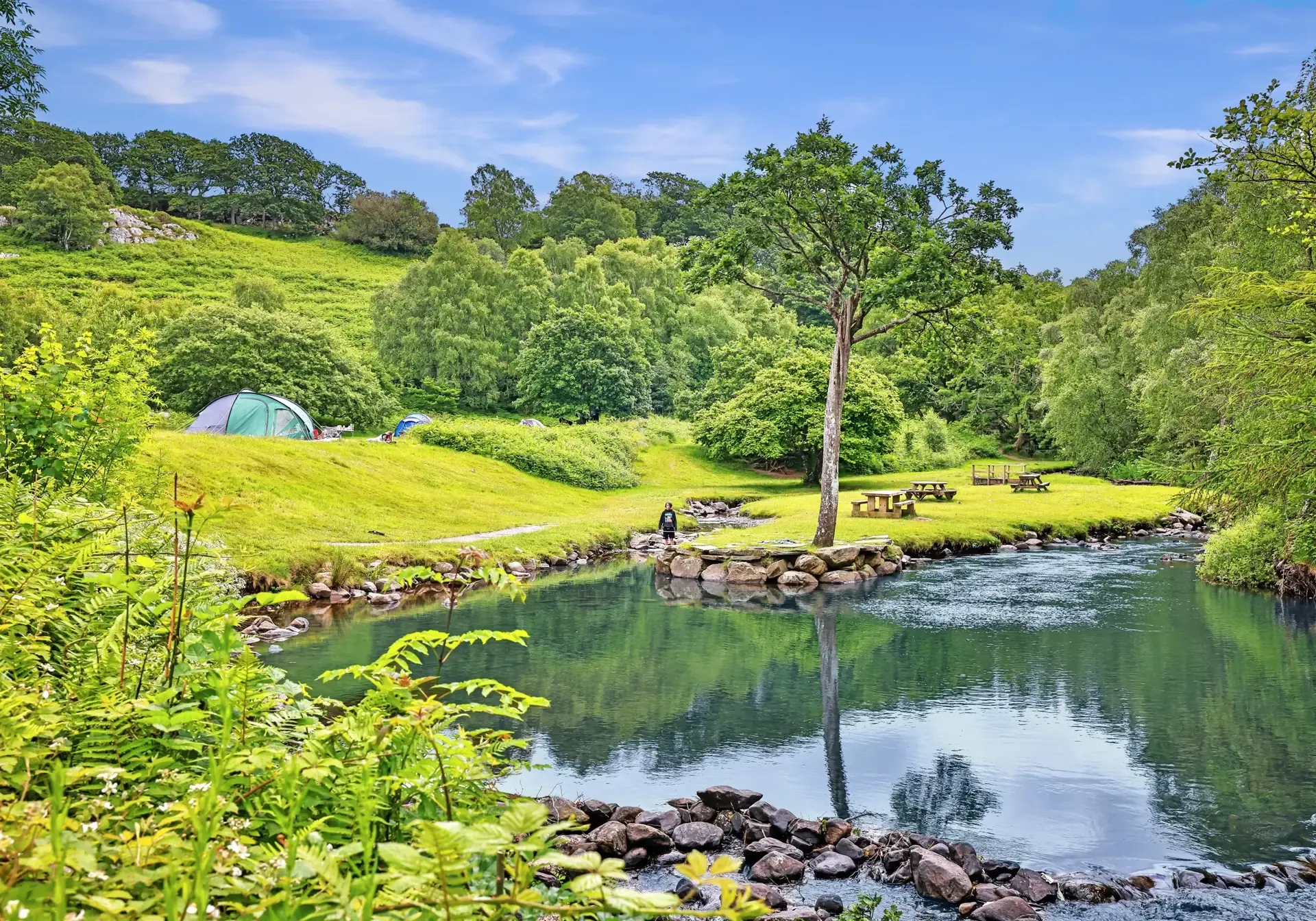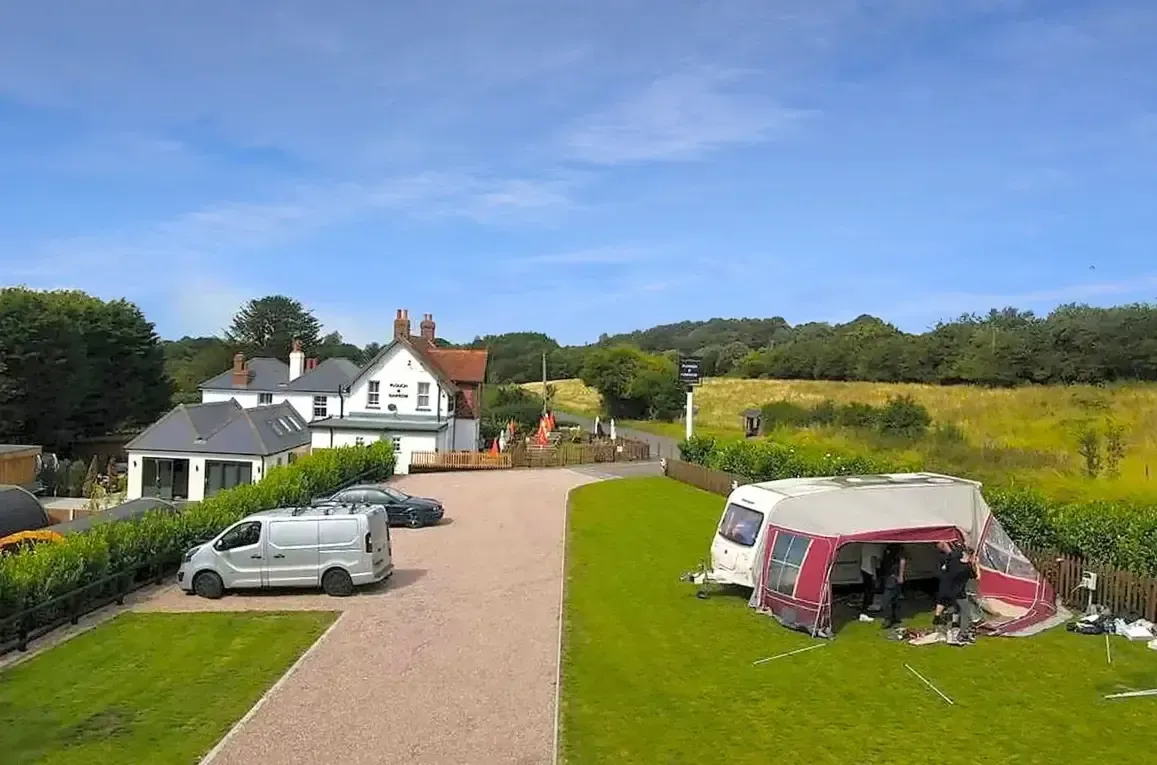Nothing adds a better atmosphere to a camping trip than a good campfire. It makes a great focal point for your group to gather, hang out and relax, provides heat and light, and of course you can cook and make hot drinks on it.
And we all know that food cooked on a campfire tastes awesome!
Does your campsite allow fires?
First off it's important to choose a place to camp that allows fires, as not all campsites do. Some will only allow enclosed fires in BBQs or portable fire pits, while others might only allow fires in designated areas.
Be sure to check with your campsite before you book, instead of turning up and risking disappointment. Even better, use our campsites that allow campfires search.
Fires when wild camping
Wild camping with fires is something of an issue. While everyone agrees that campfires are a joyful and important part of camping, it's not easy to have an open fire legally and there are legitimate concerns about keeping the fire safely under control and stopping it spreading. Sourcing firewood and fuel can also be an issue.
Many people advocate a 'no fire rule' when wild camping as it reduces general concerns about wild camping as a practise.
That said, if you are wild camping (with appropriate permissions) and you want to make a fire, it is worth discussing this with the land owner. Many farmers will be ok with it if you make a proper fire pit.
Fires on beaches
Unless otherwise stated, fires are usually permitted on beaches in the UK below the high water line, as long as they don't disturb the local environment. The law is fairly grey on this and technically it will depend on local by-laws.
If there are no signs up you will probably be ok, especially if the beach is not in a built up area. Be aware that land above the high water mark might well be privately owned and in that case you should seek permission first.
Safety considerations
Before you start your campfire fun, it's sensible to take a couple of safety precautions. Fires are dangerous and can potentially get out of control and spread quickly, so keep the following in mind:
- A fire should never be left unattended. This is the number one rule of fire safety.
- Keep your fire small.
- Build your fire away from tents or other accommodation, vehicles, overhanging trees or anything else that could potentially catch fire and cause the fire to spread.
- Take the wind direction into account when building a fire.
- Never use flammable liquids on a fire, no matter how tempting.
- The ground around your fire should be surrounded by non-flammable material, such as dirt or rocks, so that the fire cannot spread.
- Keep a bucket of water near your fire.
- It is important to make sure your fire is completely extinguished with water before you leave. Embers can stay hot for hours even if they look like they are out, and can be easily blown by the wind.
- Keep an eye on children around a campfire. They should stay well clear when playing and should be respectful of the fire when they are close to it.
Fuel
Never cut down living trees for fuel but instead use wood that you find on the ground. This not only respects the environment in which you are camping but also makes for a better fire, as dead wood is significantly easier to burn than green wood.
To start a fire you need three types of fuel and it is important that all your fuel is dry. To begin with you need tinder - material that lights easily and burns quickly (like dry leaves). Next you need kindling, that burns easily and can be lit using the tinder (twigs or rolled up newspaper, for example). Your kindling then lights your main fuel (branches, for example).
Don't be too ambitious with the size of your fuel, especially while you are getting the fire going.
Try to use sustainable charcoal if you want to use charcoal. Currently 90% of charcoal in the UK comes from abroad, often from bad sources such as rainforests. It is easy to find sustainable charcoal in any supermarket or garden centre.
Tips for starting a fire
There are a variety of different ways to build a fire but if you plan to cook on it then you want to build it up in layers so you'll eventually have a relatively flat cooking surface and even heat distribution.
Find a safe place to build your fire, away from tents, trees and anything that might catch light. If you don't have a designated contained area in which to build your fire, such as a barrel or an existing fire pit, find a sheltered place if it's windy or alternatively create a shallow pit. Do not build your fire on grass, especially dry grass which will burn. Build it on the bare earth and be sure to clear away any plant material.
To lay your fire, start with a bundle of tinder in the middle. Then you add the kindling and build up in layers. Be sure to leave space between and under the fuel to allow the fire to breathe. We recommend building your fire in a tepee shape, although there are other good structures.
Light your tinder using matches, a lighter, or a firesteel if you are feeling adventurous. Firelighters are very useful, but if you intend to cook on the fire be careful they are safe for this use. Once you get the kindling lit, you may need to add a bit more until your main fuel lights.
It is important to allow your fire to breathe, the trick is not to pack your fuel too tightly at the start as the fire requires air circulation to really get going. Remember to feed your fire to keep it going and you're all set!
Fun entertainment round the fire
Once your fire is built, it's great to sit around and enjoy - whether you prefer to play games, music, or just chat and tell stories. Just don't forget to bring some marshmallows to toast!
Once the flames die down so you have a hot bed of embers a campfire is ideal for cooking delicious food on. You can either place a grill over the embers like you would find on a BBQ or you can cook food directly in the embers themselves.
There are lots of gourmet campfire recipes to choose from, but a super simple option is to wrap potatoes in aluminium foil (you can add butter and/or other flavourings inside the foil if you want) and place the wrapped potatoes in the embers.
It's a good idea to place embers over the tops of the potatoes to ensure even cooking, or to turn the potatoes halfway during cooking. You can find more campfire recipes here.
Putting your fire out
It is important to put your fire out properly, as embers can keep burning for hours even if they don't look hot, and they can be easily spread by the wind. It also takes longer to put a fire out than you'd think, so start early (at least 30 minutes before going to bed or leaving). Stop feeding the fire well before this.
You put out a fire by suffocating it. Ash can be useful for this purpose, but if you haven't built up a lot of ash, use water. Begin by sprinkling the water on until you put out the embers. Don't flood the fire as this will prevent you and others from using the spot or fire pit the next day. Stir the fire as you go to make sure it's all out.
When you stop seeing steam and hearing hissing noises, you are getting close. Hover your hand over the ashes (never touch them with your hand) to feel for the fire going cold.
Finally, dispose of your ashes and patch up your ground to leave things neat and tidy.
Campfires keep campers happy!
As long as you're careful, having a campfire will be a wonderful addition to your campsite. They're great for bringing people together, creating great tasting food, and providing warmth and light. Not to mention the hours of entertainment you can have simply staring into the flames!
Your comments about this article
Alan
21/04/2019 21:15I was trying to find a site where I can take a tourer onto a site and leave it there. I would hope they would store it over winter and over the season I could just go to it as and when I wanted to. I am willing to pay an annual site fee to include electric and gas. Can you advise as I am a novice in this area
Martin Smith
22/04/2019 09:01Have a look at our listings of 250+ sites offering seasonal pitches Alan :-)
- Why go camping?
- Camping statistics
- How to plan a camping trip
- Equipment and gear: what to take camping
- How to choose a campsite
- Camping etiquette and campsite rules
- Choosing a pitch and setting up camp
- Breaking camp
- How to keep warm when camping
- How to avoid midges, wasps and other insects while camping
- Camping with dogs
- Camping with campfires
- Camping tips, hacks and tricks
- Beware carbon monoxide poisoning
Download our list of everything of you need to remember for the perfect camping trip!
DownloadIn the UK, you don't have to travel far to see some amazing sights.
We're lucky enough to have world-besting landscapes, history and wildlife right on our doorstep.
Where will you explore next?
Explore Destinations


